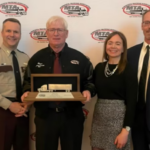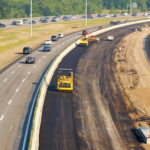The North Carolina Department of Public Safety (NCDPS) has granted two contracts to introduce advanced commercial vehicle enforcement technology at weigh stations.
On September 18, Quarterhill Inc., a company specializing in vehicle enforcement technology, revealed that NCDPS awarded them contracts totaling $5.8 million to upgrade weigh stations across North Carolina.
These technological enhancements will be implemented at the Commercial Vehicle inspection facilities in Hendersonville and Halifax County.
From Quarterhill:
“In both the eastbound and westbound lanes at Hendersonville, advanced weigh-in-motion (“WIM”) systems integrated with electronic screening (“E-screening”) will be implemented to streamline the process of weighing vehicles while they are traveling at highway speeds. Two new virtual weigh stations, utilizing two lanes each, will be installed in advance of the rest areas and weigh stations. These sites will primarily focus on selecting vehicles for further inspection. The selected vehicles may then be directed to nearby rest areas used for enforcement, supplementing the fixed weigh stations.
The Halifax County northbound and southbound weigh stations will be upgraded to include new mainline sorter systems. These systems encompass state-of-the-art WIM technology, Tire Anomaly and Classification Systems, and License Plate Recognition (“LPR”).“
According to officials from Quarterhill, the purpose of the weigh station upgrades is to “enhance commercial vehicle safety and boost driver productivity by enabling faster and more efficient inspections along the busy I-95 corridor.”
“We are excited to bring our latest enforcement technology solutions to North Carolina. These projects in Hendersonville and Halifax represent an evolution for the state’s operations and emphasize our commitment to advancing road safety and efficiency,” said Chuck Myers, CEO of Quarterhill. “By implementing these sophisticated systems, we are not just improving the workflow for the NCDPS State Patrol but also enhancing the overall safety and operational efficiency of the commercial transport sector across the state.”





